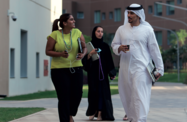While health and safety is at the core of Abu Dhabi’s initiative to close villa schools, the push will also have positive knock-on effects for the local construction sector by creating opportunities to build educational facilities to replace them.
Education has been widely discussed by policymakers as a key pillar in the emirate’s economic development. Sector reforms have been significant in recent years, with steps taken including the creation of the Abu Dhabi Education Council (ADEC) in 2005 and a noticeable increase in both the budget allocation and broader government support.
Although it was introduced in 1999, the process of closing privately operated villa schools, which mostly cater to lower-income families, is still ongoing. Critics see villa schools as a blot on the educational landscape due to a lack of basic health and safety measures. Policymakers, too, worry that cramped and unsafe facilities may leave students at risk in the event of an emergency. By the same token, such premises – especially when compared to the vast majority of Abu Dhabi’s schools – lack educational amenities for practical learning such as science and computer labs, sports facilities and art areas.
The number of villa schools is now down to just 50 across Abu Dhabi and Al Ain, following six closures last year. In 2011, another 13 villa schools are expected to shut and move to purpose-built facilities.
ADEC will focus its attention on school operators that have made little demonstrable effort to switch over to acceptable facilities. The regulator is set to name the schools selected for closure, which, it says, will happen in phases running until 2013.
There has been a degree of confusion regarding the timetable, however, with the owners of some schools believing they had until 2013 to shift premises. Officials, nevertheless, are keen to address this issue in phases, thereby preventing schools from stalling until the final deadline.
“There is some confusion that 2013 is the deadline,” Pierre Scottorn, section manager of the private school improvement department at ADEC, told local press. “The reality is, because of the scale of the problem, it is almost unfeasible for it to happen in one given year, which is why we are trying to phase it out.”
Operators complain of prohibitively expensive building costs, reaching into the millions of dollars for some larger schools. Biting further into budgets is ADEC’s new school design manual, which requires buildings to meet certain criteria such as site selection, minimum dimensions, indoor air quality, acoustics and accessibility for students with disabilities.
Private school owners will also have to, depending on their curriculum, offer libraries, sports facilities, music and art rooms, computer and science labs and special education classrooms. Moreover these new buildings must score “1 Pearl”, the lowest rating on the Urban Planning Council’s Estidama sustainability scale.
Such high specifications translate into heavy upfront capital costs for school owners. The corollary to this, however, is that low-cost design firms and contractors should find Abu Dhabi fertile ground for projects in the education sector. After all, as government efforts to improve school buildings accelerate, it will create real demand in the market for affordable solutions that meet ADEC and Estidama requirements.
For school operators, creative building solutions are going to have to come to the fore. For instance, the use of optimal cost-space utilisation – whereby functions are designed to complement classroom timetables while also being cost-efficient – is one technique that could be incorporated.
Adopting such measures means budgets can be cut by increasing the occupancy of space and, thus, reducing the number of rooms needed. End results for operators can be reduced upfront capital and operating costs because fewer rooms translate into lower energy and maintenance bills. More importantly, a smaller school also means less land will be required.
While this transition will likely mean that some school operators drop out of the market, ADEC’s strategy is nevertheless logical and in line with the emirate’s broader development strategy. All students must receive their lessons in a safe and suitable environment that meets their educational needs. Meanwhile, as Abu Dhabi’s drive toward international best practices in education continues, it is sure to open up further investment and business opportunities going forward.

